The final meeting of my spring semester Snowball Earth class was a field trip to the University of Maryland, hosted by Snowball guru Jay Kaufman, a specialist in chemostratigraphy using stable isotopes.
Here, Jay welcomes the class to his wet lab:
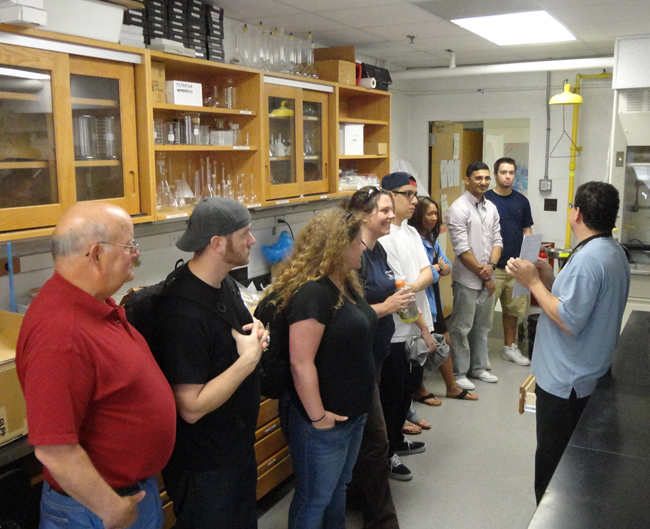
Doing chemostratigraphy takes lots of samples.

Here’s a drawer full of samples from one of Jay’s many field areas:
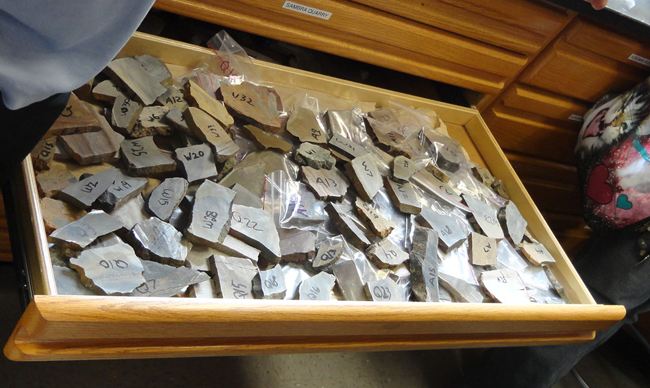
Then it was time for show and tell. Jay brought out some of his most charismatic Archean and Proterozoic samples. Here, for instance, is a BIF with tiger’s eye:

We made a macro GigaPan of this sample here.
Next up, some “tubestone” stromatolites that lived in the hothouse aftermath of the Snowball Earth glaciation. The idea is that these guys exist in the “cap carbonate” layer in such a distinctive morphology because they were being “buried alive” by the massive, rapid precipitation of calcite from the ocean.

A closer look:
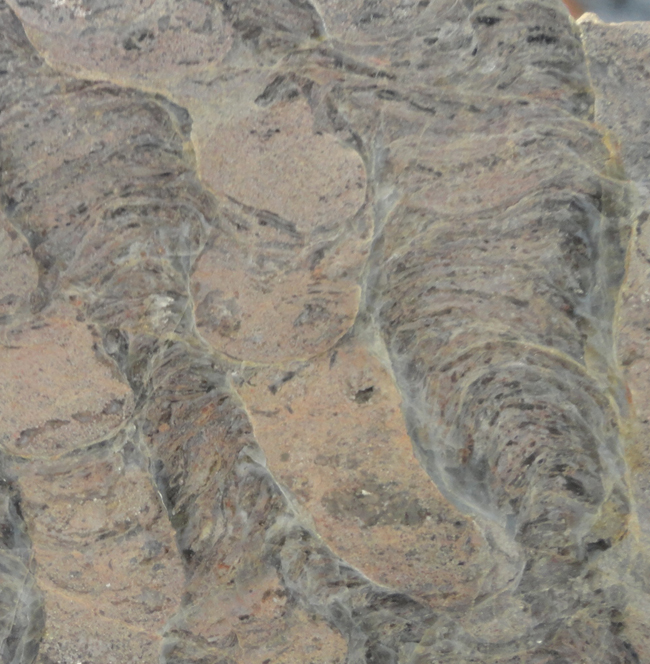
Here are two samples that show trace fossils from Precambrian organisms…
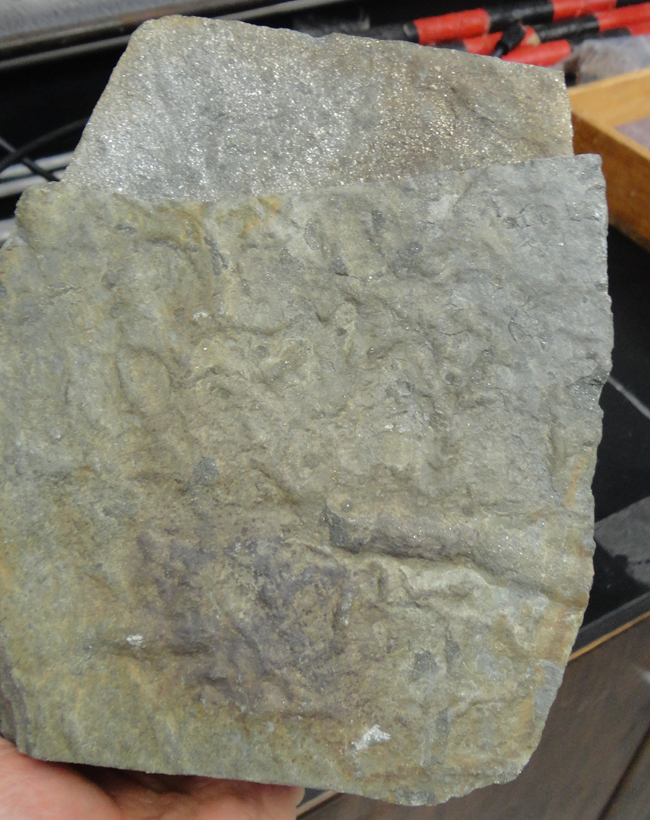
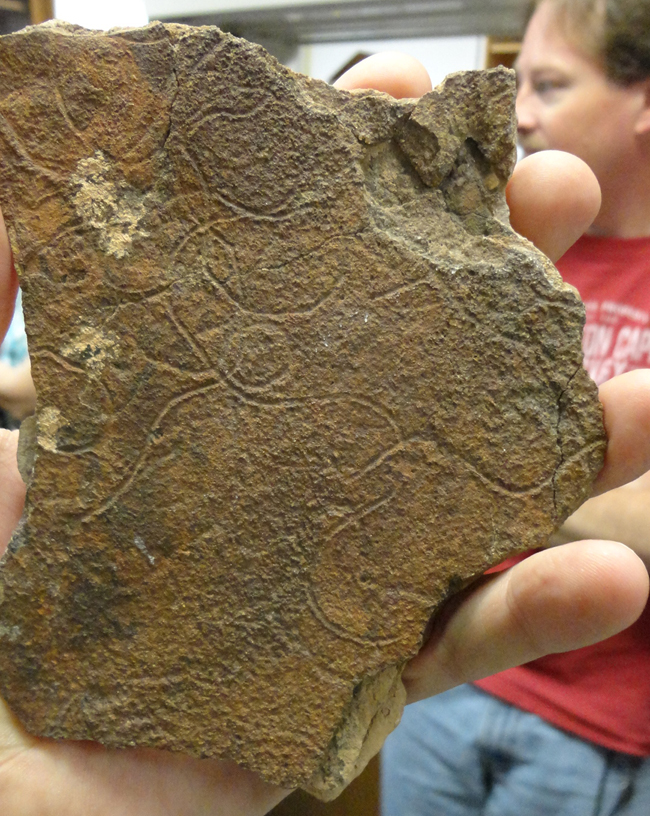
Have you heard of the Ediacaran fauna? Here’s half a Dickinsonia:

Other Ediacaran body fossils – sort of blob shaped:
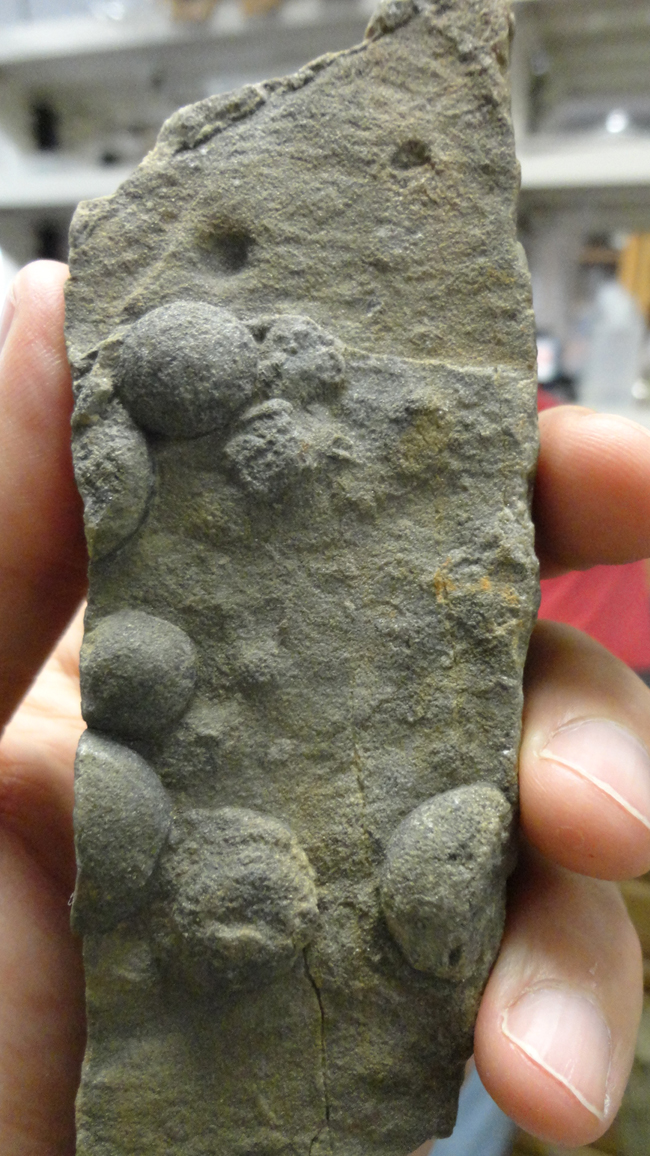
Giant ooids from the Beck Springs Formation of Death Valley, California:

Another Beck Springs sample, where the ooids have been cross-sectioned:
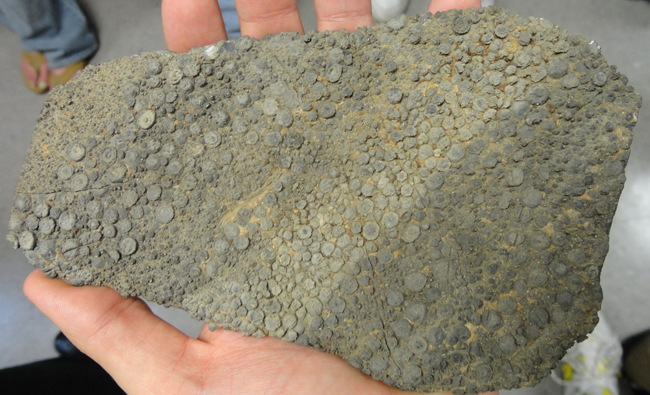
We made a macro GigaPan of this one, too. Here’s the opposite side, all sawed, ground down, and polished up:
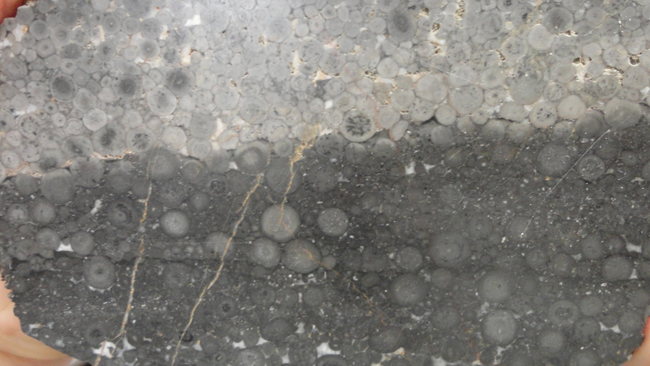
We made a macro GigaPan of that one, too.
Finally, Jay took us upstairs to the mass spectrometer, and discussed its use and care:
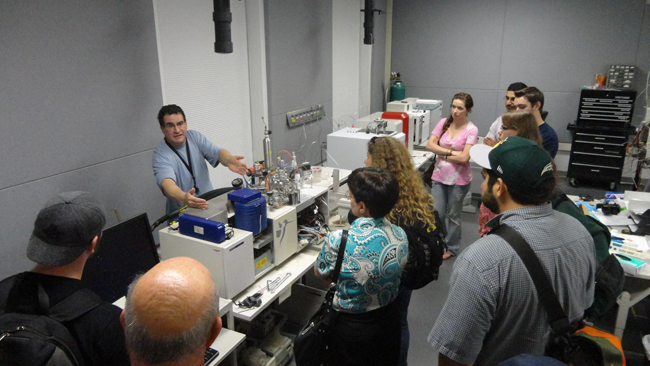

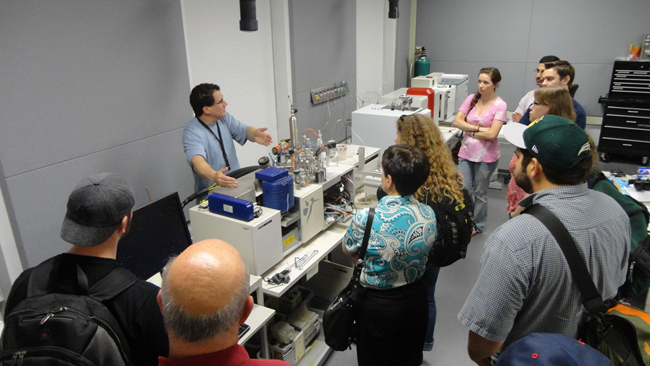
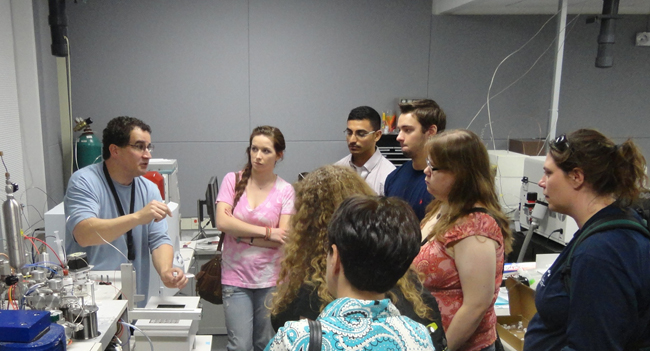
Everyone had a good time, and they claimed to have learned a lot on the trip. One of my most experienced students said it was one of her top five geology field trips of all time, so I think that says a lot about the level of interest in the facilities, samples, and general “feel” the NOVA students got visiting a big research university.
Thanks for showing us a good time, Jay!

The “blob shaped” Ediacaran fossil might be Bergaueria, which is interpreted as an anemone resting trace (cast). There’s a photo of nearly identical traces in the latest issue of the Canadian Society of Petroleum Geologists “Reservoir” magazine, from the Lower Cambrian Gog Formation near Lake Louise in the Canadian Rockies. Here’s the URL (a PDF, scroll to p. 16-17): http://www.cspg.org/documents/Publications/Reservoir/2012/Reservoir-2012-06.pdf
Thanks Howard – what a great little article. I’ve printed a copy in case we get some free time to hike there this summer.
Callan–that article is one of the “Go Take a Hike” series, published in most issues of the Reservoir. A lot of these hikes are in the Rockies, might be worth your while checking some of the others, as they are usually fairly easy hikes and focused on geology. Go to http://www.cspg.org then navigate to Publications/Reservoir/archives. For example, Dec 2009 (Helen Lake stromatolite beds, Banff Park); Jan 2012 (Marble Canyon/Paint Pots, Kootenay Park); Mar 2012 (Elbow Lake, Kananaskis); April 2012 (Buller Pass, Kananaskis).
Thanks — Unfortunately, it seems I can’t access the archives without a log-in ID. I’d love to see the four articles you mention, in particular the Helen Lake stromatolite beds. Any chance you can email me a copy of that one at cbentley (A) nvcc.edu ?
Thanks Howard,
C
I see Maddie R. is in your class. I was a chaperone on a trip to Paris with her and 27 other SLHS students over spring break in 2010.
Indeed she is. She tells me she’s intending to major in geology!
Very cool. I was just discussing the possibly Snowball Earth related Kingston Peak Fm. diamictite found in the Death Valley area, which contains clasts of Precambrian Beck Springs, Crystal Springs, as well as basement gneisses and granitics. I also recently found an fantastic spot to collect Beck Springs oolite and tempestite facies; it also happens to be where the Noonday Dolomite rests unconformably on the Beck Springs.
John – I would love to learn that location. Can you Google Map locate it and send me the lat / long? Doesn’t have to be public – it could be an email to cbentley at nvcc dot edu, if you don’t want it widely advertised. But I’m looking for good teaching outcrops for my California field class…
Giant ooids from the Beck Springs Formation of Death Valley, California:
they are called in Ukraine Nemiana simplex. For your university I can give a few samples of Ediacaran/
Sure; that would be great. Here’s how to get in touch with me.